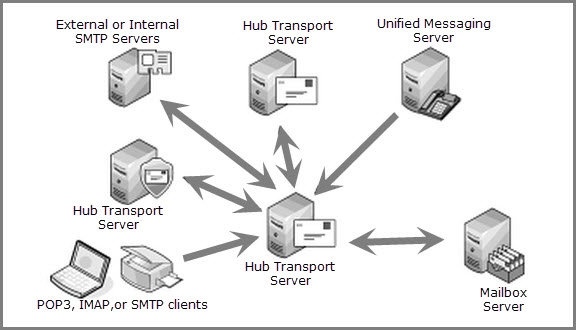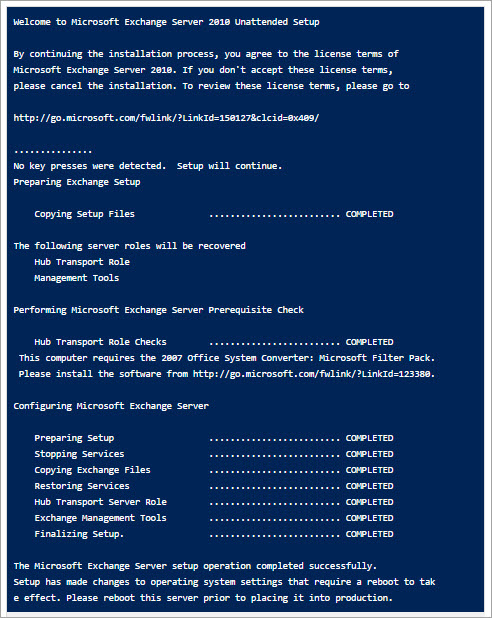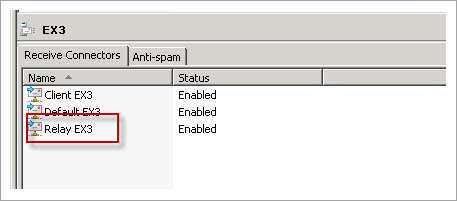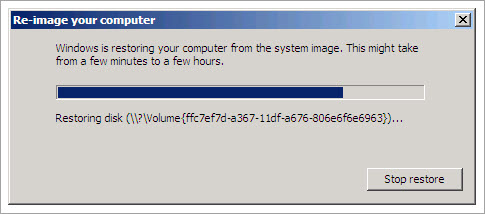In Exchange 2010, if a message is delivered from one end to another; it must have crossed a hub transport Server at least once. Even if the mail is sent from a mailbox to another on same database, it will route through HT Server. All rules and regulations that must be applied for delivery of message are saved under HT Server settings. A hub transport Server should be installed on an Active Directory site that has Mailbox Server role installed on it.

Backing up and recovering hub transport Server role is an easy task because all configuration settings are saved in Active Directory. If the AD is available and it is backed up, you can stay assured that the HT Server is also backed up and is safe. In order to restore HT Server, perform following tasks:
This will make the Hub Transport Server ready to use again. However, when HT Server is backed up using this technique, there are few things that won't be backed up.
The System State comprises of information like SSL certificates that are installed on Server, the registry settings, anti-spam products etc. If any kind of modifications are done in the default settings, it might cause a problem in HT role restoration.
Also, Extensible Storage Engine settings, information about transport queue, protocol, and message logs needs to be backed up. This is because the file system comprises of applications and the agents that are installed on the Server.
Only a right technique is the key to successful backup and restoration of database. Depending upon the requirement, different approaches can be made to backup Exchange 2010 hub transport Server.
Backup Everything
If the entire Server is backed up along with the Active Directory via a "Full System Backup," then covers up all information for recovery. Nevertheless, this is a time consuming process and will occupy most of the space of backup storage.
The transport queue saves transient data. In case of Server failure, if there is any unreached message in the transport queue, it will be lost. But, if we just think of backing up whole Server more than once in a day, it would sound quite impractical.
Backup - What is Required
In order to save the time and storage space for backup, it is better to backup only the required data. For most of the Exchange Server environments, it would mean backing up the file system database (transport queue and the log files).
Since this kind of backup is relatively less time consuming, so it is possible to maintain backups multiple time a day and that too without losing ant undelivered mail. This kind of backup is suitable for environments where backlogs in transport queue are a regular phenomenon.
Backup Nothing
Sometimes, there is no need to backup anything. Yes, this can be practical when:
As mentioned above that configuration settings of a HT Server gets saved into the Active Directory. In case the hub transport Server fails, following measures can be taken to restore it:

In this case, it would be Server installation in recovery mode rather than the normal installation process.

You will be prompted to restart the Server. When the Server has started, you can check out that the all configurations have been recovered (the receiver connector, message tracking log etc).


However, one notable fact here is the log files will be restored after installation using recovery mode. Also, additional applications and agents have to be manually installed in order to complete the HT Server restoration process.
The process demonstrated here restores full system backup that is created for hub transport server. Depending upon the amount of database and the backup type, the overall time for restoration can vary.

The strategies used for backing up the Server have their cons and pros. For many of the enterprises, full system backup is the finest choice in spite of the fact that they consume lots of storage space and time. Frequently backing up the log files and the transport queue is the strict requirement of organizations and that case alternative can be adopted accordingly.
Backup is the most secure way to keep your database while database is corrupted due to any of cause. But what happen if you don't have backup? At that time to switch to third party tool is the smart move which can recover & convert corrupt Exchange mailbox data into various formats.